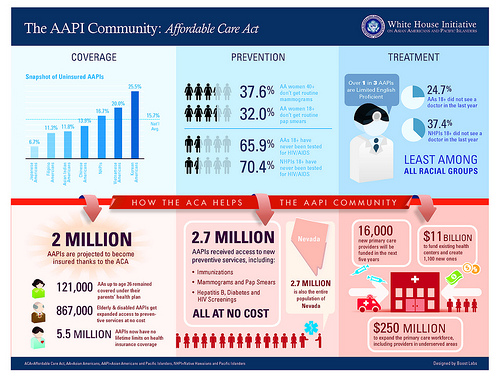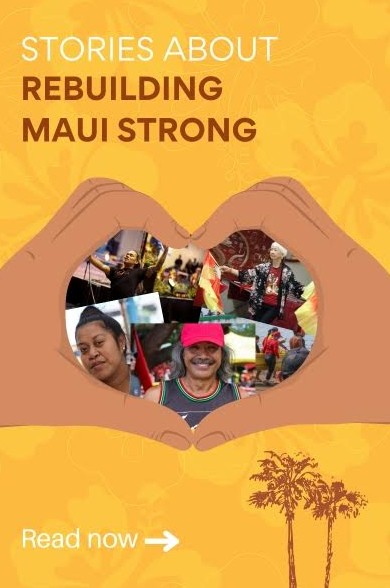(This was originally posted on the Center of American Progress website and is reposted here with their permission).
The federal and state health insurance marketplaces will be open for the second round of enrollment until February 15, 2015. For information on how to enroll, visit www.HealthCare.gov. The Affordable Care Act, or ACA, has helped millions of uninsured Americans—especially Asian Americans and Pacific Islanders, or AAPIs—gain affordable, high-quality health care coverage. As enrollment for 2015 coverage nears an end, here are five facts to keep in mind about the effects of the ACA on the AAPI community.
A substantial number of AAPIs remain uninsured. Before the ACA, one in every six AAPIs were uninsured. Among some AAPI groups—such as Korean, Tongan, Pakistani, and Thai Americans—nearly one in four people were uninsured. Even taking into account the first round of enrollment, 1.3 million of them are still uninsured.
The ACA has expanded AAPIs’ access to high-quality health care. After the first round of enrollment, an additional 600,000 Asian Americans and Pacific Islanders gained insurance coverage, and 121,000 young AAPI adults between ages 19 and 26 gained coverage under a parent’s employer-sponsored or individually purchased health insurance plan. By 2016, 2 million otherwise uninsured AAPIs will gain or be eligible for coverage.
The ACA has made quality health care more affordable for AAPIs. Approximately 10 percent of AAPIs who purchased insurance offered through the federal and state health insurance marketplaces benefited from financial assistance, such as tax credits. The U.S. Department of Health and Human Services, or DHHS, has estimated that almost half of those who enrolled in plans with tax credits pay $50 or less in insurance premiums per month.
The ACA has ameliorated health disparities that long plagued the AAPI community. According to the Centers for Disease Control and Prevention, or CDC, Asian Americans and Pacific Islanders were more likely to have Hepatitis B as of 2014, and AAPI women were less likely to get screened for cancer. Under the ACA, an estimated 4.3 million AAPIs—particularly, 2.5 million AAPI women—with private insurance now have access to expanded preventive services, such as screenings for various types of cancer, with no cost sharing.
Although language and cultural barriers have limited the reach of the ACA’s benefit to AAPIs, organizations have found effective ways to transcend these barriers. For example, Action for Health Justice partnered with local organizations and small businesses to translate health insurance marketplace materials into Hindi, Korean, Farsi, Mandarin, and Arabic Urdu, among many others, as well as to provide multilingual and multicultural assistance for the AAPI community.
For the 1.3 million uninsured AAPI, the 2015 enrollment period is very important. The community has already benefited greatly from affordable, accessible, and quality health care. Now that local organizational efforts have addressed language and cultural barriers—which previously hindered the population from enjoying the ACA’s benefits—the AAPI community should seize this opportunity to enroll in the second round of open enrollment.




